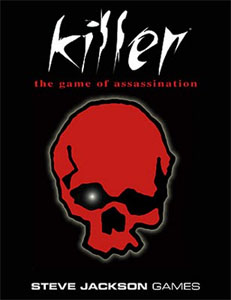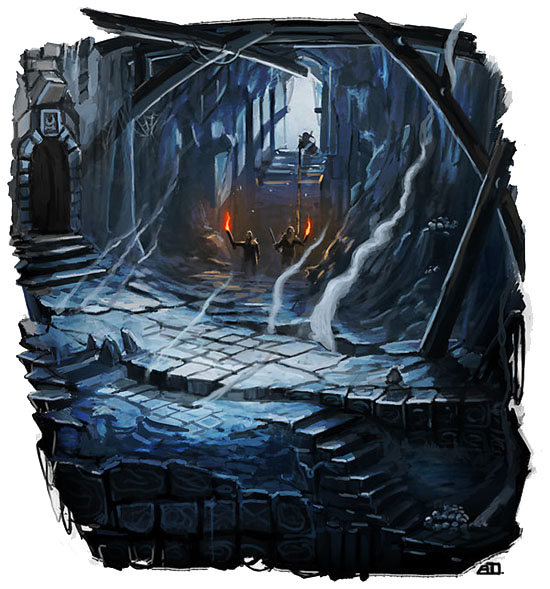Tagline:In the spirit of Capture the Flag and Paintball, but with twists all its own, Killer definitely deserves the title of Best LARP of All Time.
Running Just as I’ve never had a chance to run the Darkness Revealed trilogy, I’ve also never managed to get a proper game of Killer set-up. Yet another some day…
 The history of Killer: The Game of Assassination dates all the way back to 1981. This new edition, released in 1998, continues the nearly 20 year tradition admirably.
The history of Killer: The Game of Assassination dates all the way back to 1981. This new edition, released in 1998, continues the nearly 20 year tradition admirably.
Killer’s basic concept can be summed up very simply (in the words of SJG): “Wipe out your friends.” Basically Killer gives you a set of guidelines for setting up a competitive structure in which, yes, you go around killing your friends. This shouldn’t be confused with something like Paintball – where you go out into the wilderness and spend a few hours blowing each other away in a fairly harmless manner. No, as the full title (“The Game of Assassination”) suggests this is more subtle than that – a typical game can stretch over weeks, months, or even (although I pale to think of it) years. You don’t walk up to somebody and shoot them, instead you have to plot ingenious and crafty ways of knocking them off. You’re not a soldier, you’re an Assassin.
With such a simple concept, you might think, you don’t have to even buy the book. And why is it 80 pages long – there must be a lot of fluff, huh?
Wrong.
This is a great manual giving you giving a set of guidelines and a handbook to playing the game. It starts by giving you a general set of rules which you can use to vary the specific nature of your game (examples vary between allowing access to living places or times of day when killing is allowed). From there it gives an exhaustive list of fake weapons which can be constructed and used (and cautionary notes against many which should not be used) – from guns to bombs to poisons to sci-fi contraptions.
From these basics the book provides several optional versions of the game, some general words of advice and caution, some pre-built scenarios which can be used, a scoring system, and a set of photocopiable faux documents for the use of the playing group. And let’s not forget the hilarious illustrations which accompany the text.
All in all by the time I finished reading this manual I was itching to set up a game. Definitely give this book a try, at only fifteen bucks you won’t be disappointed.
Style: 4
Substance: 5
Author: Steve Jackson
Company/Publisher: Steve Jackson Games
Cost: $14.95
Page count: 80
ISBN: 1-55634-351-5
Originally Posted: 1998/12/14
I actually had no memory of reading this book or writing this review until I started converting it for the website; then a flood of memories came rushing back. It was after a few experiences like this that I started keeping a log of books as I read them. Human memory is a really fickle thing.
I do remember now that my interest in this book grew as a direct result of my first experiences with paintball (which I was properly introduced to by members of my D&D group at the time). I was never able to get that group interested in Killer, though.
Has anybody reading this participated in a round of assassination? How was it? Worth the time for me to try to get one set-up?
For an explanation of where these reviews came from and why you can no longer find them at RPGNet, click here.
















